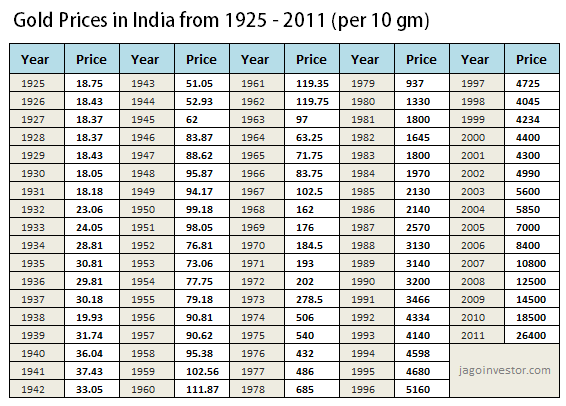Contents
This explains why the main statistical packages do not use it, but propose instead one or the other procedure described below. When data skewed, the tail region may behave as an outlier for the statistical model, and outliers unsympathetically affect the model’s performance especially regression-based models. Some statistical models are hardy to outliers like Tree-based https://1investing.in/ models, but it will limit the possibility to try other models. So there is a necessity to transform the skewed data to close enough to a Normal distribution. In finance, risk and insurance are examples of needing to focus on the tail of the distribution and not assuming normality. So, kurtosis is all about the tails of the distribution – not the peakedness or flatness.

Actually, the generalized distances can be subjected to a Shapiro-Wilk test of normality, whose conclusions are applied to the multinormality of the original multivariate data. Kurtosis refers to the degree of presence of outliers in the distribution. If the skewness is between -1 & -0.5 or between 0.5 & 1, the data are slightly skewed. Median is the middle value, and mode is the highest value, and due to unbalanced distribution median will be higher than the mean.
1.5 Fourth-Order Moments: Kurtosis and Cokurtosis
Most of the values are concentrated on the right side of the graph. A measure of “peakedness” of a probability distribution, defined as the fourth cumulant divided by the square of the variance of the probability distribution. Extensive simulation studies have shown that W is a sensitive omnibus test statistic, meaning that it has good power properties over a wide range of non-normal distribution types and sample sizes. Two frequency distributions with the same mean and the same standard deviation but different kurtosis .
This can be done by acquiring DWIs on only one shell in q-space (equivalently, one b-shell). “q-Ball Imaging” is a technique for estimating the diffusion ODF using data acquired on one shell of q-space. Instead of a Cartesian Fourier transform, a transform called the Funk–Radon transform is applied.

The peak of the curve is at the mean, and the data is symmetrically distributed on either side of it. The mean, median, and mode are equal to each other or lie close to each other. The leptokurtic distribution shows heavy tails on either side, indicating large outliers.
The formula used is μ4/σ4 where μ4 is Pearson’s fourth moment about the mean and sigma is the standard deviation. Skewness refers to the degree of symmetry, or more precisely, the degree of lack of symmetry. Distributions, or data sets, are said to be symmetric if they appear the same on both sides of a central point.
In finance, such a pattern depicts risk at a moderate level. Celebrating 100 years of Kurtosis a history of the topic, with different measures of kurtosis. A different measure of “kurtosis” is provided by using L-moments instead of the ordinary moments. Applying band-pass filters to digital images, kurtosis values tend to be uniform, independent of the range of the filter. This behavior, termed kurtosis convergence, can be used to detect image splicing in forensic analysis. The red curve decreases the slowest as one moves outward from the origin (“has fat tails”).
What is a platykurtic distribution?
The area around major urban centers was extracted using the quaternary catchment shapefile. From the quantified LULC classification, the urban classification was extracted and rate of urban expansion computed for the period under consideration. In total, a total of five urban built-up areas were extracted, corresponding to the selected catchments in South Africa. The total size of built-up areas was calculated in QGIS and later converted to hectares .
- There is no upper limit to the kurtosis of a general probability distribution, and it may be infinite.
- The peak of the curve is at the mean, and the data is symmetrically distributed on either side of it.
- DKI parameters increase when there are divergences from the typical displacement distribution of water molecules.
- Distributions with low kurtosis exhibit tail data that are generally less extreme than the tails of the normal distribution.
- Completed my Ph.D. in Statistics from the Department of Statistics, Bahauddin Zakariya University, Multan, Pakistan.
Having discussed the shape of a normal distribution, we can talk about kurtosis and what it means to have fat tails and peakedness. The excess kurtosis in a platykurtic distribution is negative that is characterized by a flat-tail distribution. define kurtosis The minor outliers in a distribution are indicated by the flat tails. The platykurtic distribution of investment returns is advantageous for investors in the financial context as this would mean a higher return on investment.
Statistics – Kurtosis
Is a measure of symmetry in distribution, whereas Kurtosis measures heaviness or the density of distribution tails. The excess kurtosis of a given distribution determines the forms of kurtosis. Excess kurtosis can be either positive or negative, as well as near to zero. For non-normal samples, the variance of the sample variance depends on the kurtosis; for details, please see variance. “Fat tails” are seen in distributions with a kurtosis greater than 3.0, and is known as leptokurtic. The normal distribution has a kurtosis of exactly 3.0, and is known as mesokurtic.

In other words, kurtosis identifies whether the tails of a given distribution contain extreme values. Describes two distributions with the same means and the same standard deviations but with obvious different degrees of peakedness around the means. The curve with solid line has greater kurtosis than that of the curve in dash line. The extreme positive skewness is not desirable for distribution, as a high level of skewness can cause misleading results. The data transformation tools are helping to make the skewed data closer to a normal distribution. For positively skewed distributions, the famous transformation is the log transformation.
Kurtosis risk is the name given to this indicator that gives investor a sign about their assets. Pearson’s definition of kurtosis is used as an indicator of intermittency in turbulence. It is also used in magnetic resonance imaging to quantify non-Gaussian diffusion. D’Agostino’s K-squared test is a goodness-of-fit normality test based on a combination of the sample skewness and sample kurtosis, as is the Jarque–Bera test for normality. Note that in these cases the platykurtic densities have bounded support, whereas the densities with positive or zero excess kurtosis are supported on the whole real line. One obtains the standard normal density as the limiting distribution, shown as the black curve.
In probability distribution represents the extent to which the diffusion pattern of the water molecules deviates from a perfect Gaussian curve. Mathematically, kurtosis is a dimensionless statistical metric for quantifying the non-Gaussianity of an arbitrary probability of distribution. A detailed knowledge of skewness and kurtosis is rarely important in the laboratory but since the statistics are easily available they may serve as indicators of normality.
kurtosis
Skewness is used to measure the level of asymmetry in our graph. It is the measure of asymmetry that occurs when our data deviates from the norm. This form is implemented in the Wolfram Language as Kurtosis. Master excel formulas, graphs, shortcuts with 3+hrs of Video. Financial RiskFinancial risk refers to the risk of losing funds and assets with the possibility of not being able to pay off the debt taken from creditors, banks and financial institutions. A firm may face this due to incompetent business decisions and practices, eventually leading to bankruptcy.
Data sets with high kurtosis tend to have a distinct peak near the mean, decline rather rapidly, and have heavy tails. Data sets with low kurtosis tend to have a flat top near the mean rather than a sharp peak. In this tutorial ‘The Complete Guide to Skewness and Kurtosis’, you saw the concept of Skewness and Kurtosis and how to find their mathematical values. You also take a look at how different values of skewness and kurtosis affect the distribution. Hence, you can say that Skewness and Kurtosis are used to describe the spread and height of your normal distribution. It tells you how spread out the data is, and Kurtosis is used to find the vertical pull or the peak’s height.
Kurtosis is derived from a transliteration of the Greek word kurtos. This Greek word has the meaning “arched” or “bulging,” making it an apt description of the concept known as kurtosis. In the same way, identical distributions may be made to look different, as is illustrated in the figure below.
Positive excess kurtosis is often seen for variables having strong skewness such as test 6. Kurtosis is simply a measure of how pointy or flat the peak of your distribution curve is. Subtract a mode from a mean, then divides the difference by standard deviation. You can play the same game with any distribution other than U.


There are 0 comments